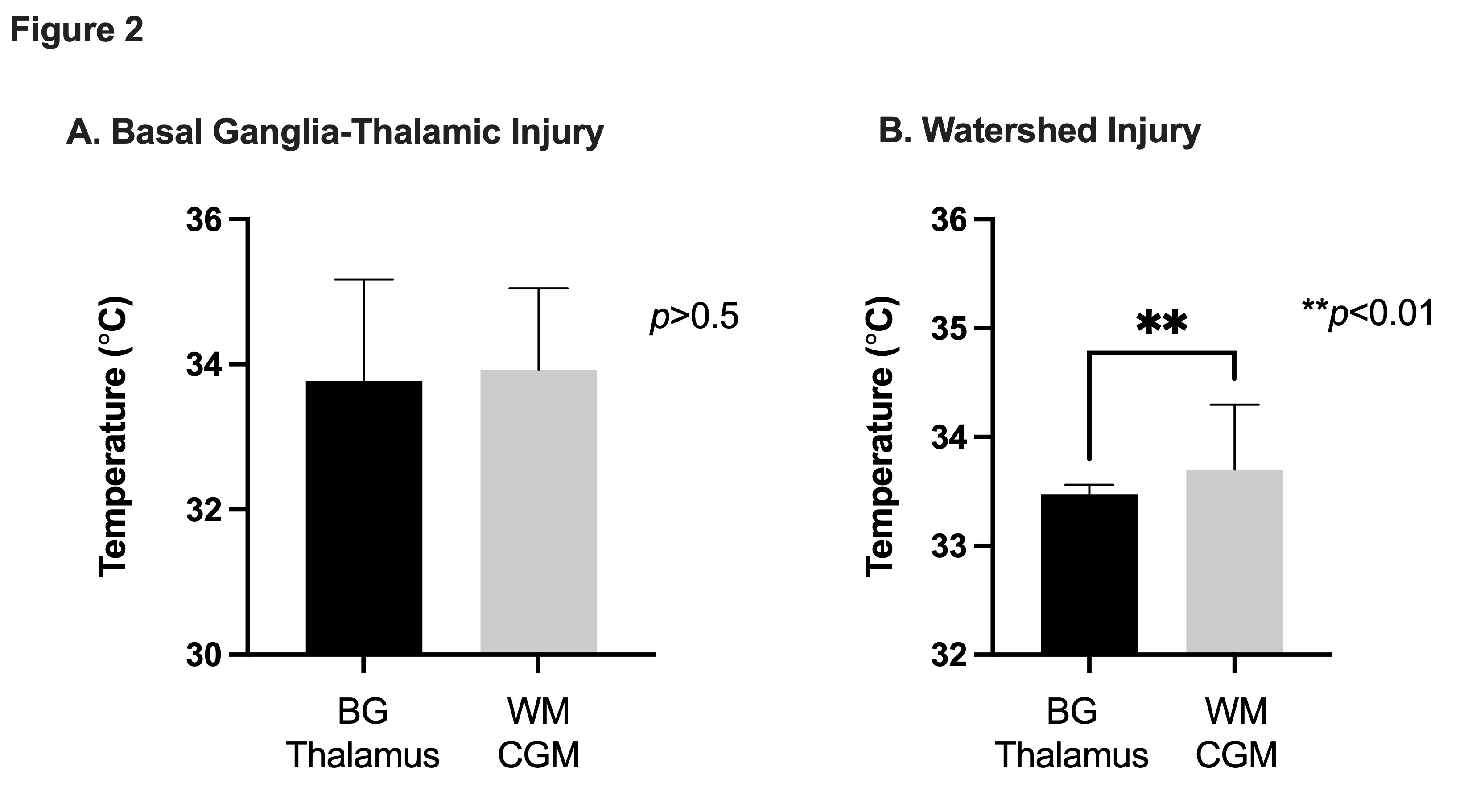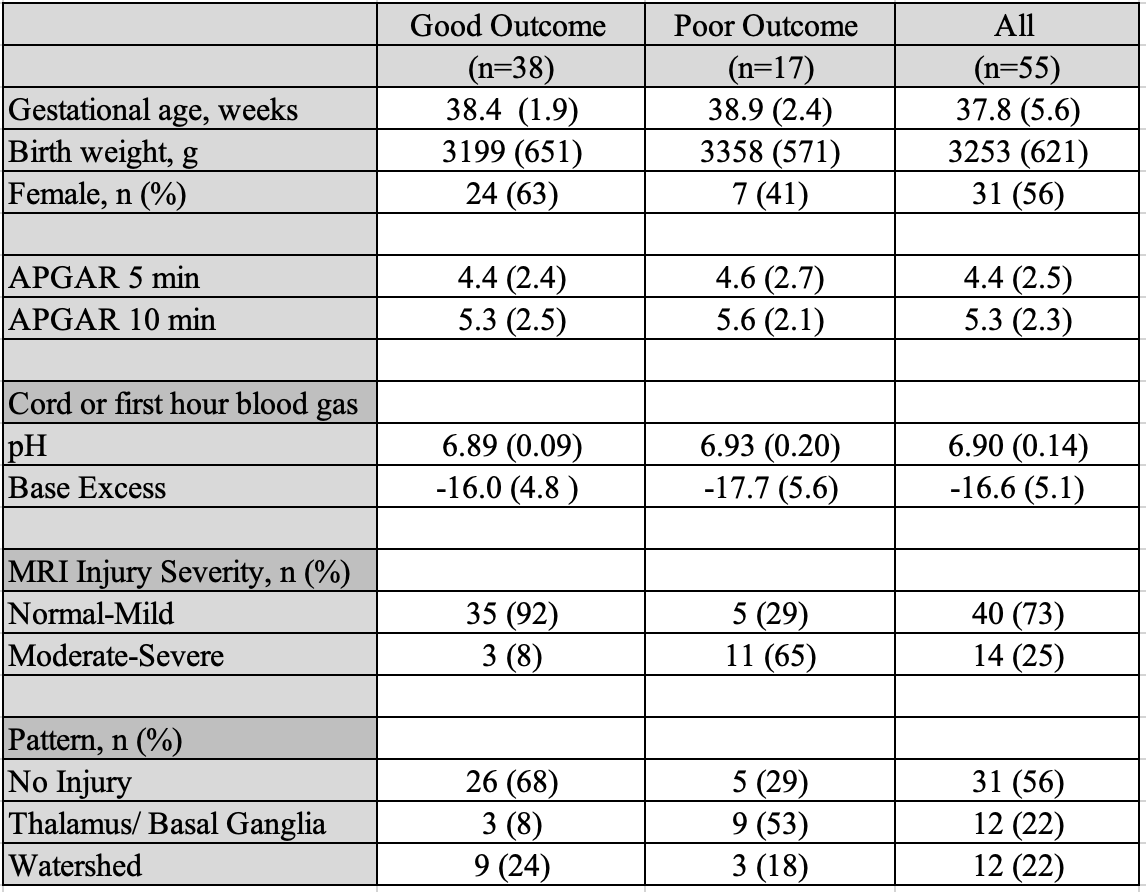Neonatal Neurology 4
Session: Neonatal Neurology 4
655 - Relationship Between Brain Temperature and Long-Term Outcomes of Infants with Hypoxic-Ischemic Encephalopathy
Sunday, April 27, 2025
8:30am - 10:45am HST
Publication Number: 655.6324
Natalie L. Smith, Children's Hospital Los Angeles, Los Angeles, CA, United States; Eni Jano, Children's Hospital Los Angeles, Los Angeles, CA, United States; Benita Tamrazi, CHLA, Los Angeles, CA, United States; Stefan Bluml, Children's Hospital Los Angeles/USC, Los Angeles, CA, United States; Tai-Wei Wu, University of Southern California, Keck School of Medicine, Los Angeles, CA, United States

Natalie L. Smith, MD (she/her/hers)
Neonatal Perinatal Medicine Fellow
University of Southern California
Los Angeles, California, United States
Presenting Author(s)
Background: Infants with suspected hypoxic ischemic encephalopathy (HIE) undergoing whole-body hypothermia, have differences in regional brain temperatures, with the deeper structures having significantly lower temperatures. It is unknown if the temperatures differences are associated with long-term developmental outcomes.
Objective: To determine the relationship between brain temperature during therapeutic hypothermia (TH) and long-term outcomes of infants with HIE.
Design/Methods: This is a prospective observational study of Infants with suspected HIE who had MRI during TH. Regional brain temperature (basal ganglia-BG, thalamus-Thal, parietal white matter-WM, and cortical gray matter-cGM) was measured by MR thermometry during TH. MR injury severity
(normal-mild or moderate-severe) and pattern (no injury, basal ganglia/thalamus-BGT, or watershed-WS) were scored by pediatric neuroradiologist using Barkovich scoring system. The primary outcome was death or neurodevelopmental impairment, which was defined as gross motor function classification system level of ≥1, diagnosis of cerebral palsy, or a cognitive score < 90 on the Bayley Scales of Infant and Toddler Development 3rd edition, at 12 to 36 months of age. This was designated as poor outcome. Statistics: Regional brain temperature were compared according to MR injury severity and pattern by unpaired t-test or Mann-Whitney test when non-normal. Logistic regression was used to assess relationship between brain temperature, MR injury severity, and outcome.
Results: Overall, 55 patients (17 with poor outcomes) were included in the analysis, Table 1. The mean age when MRI was performed during TH was 2.3 ± 0.6 days. Rectal temperature was 33.3 ± 0.4ºC during MRI. There were no differences in regional brain temperature in patients with good
versus poor outcome, except for a significantly higher Thal temperature in poor outcome group (33.9 vs. 33.0ºC, p< 0.01), Figure 1. Regional brain temperature of the WM and cGM were also significantly higher in those with WS compared to BG-T injury, Figure 2. No significant relationships between regional brain temperature and outcome were found based on the logistic regression model (controlling for injury severity, pattern, cord or first hour pH, and 5-minute Apgar).
Conclusion(s): In-vivo measurement of brain temperature reveal regional tissue resistance to cooling that is associated with injury pattern. However, brain temperature was not a predictor of long-term outcome.
Figure 2
 Regional brain temperatures compared to pattern of brain injury.
Regional brain temperatures compared to pattern of brain injury. Table 1. Patient characteristics
 Numbers are reported as mean (standard deviation), unless specified as number (%).
Numbers are reported as mean (standard deviation), unless specified as number (%). 
